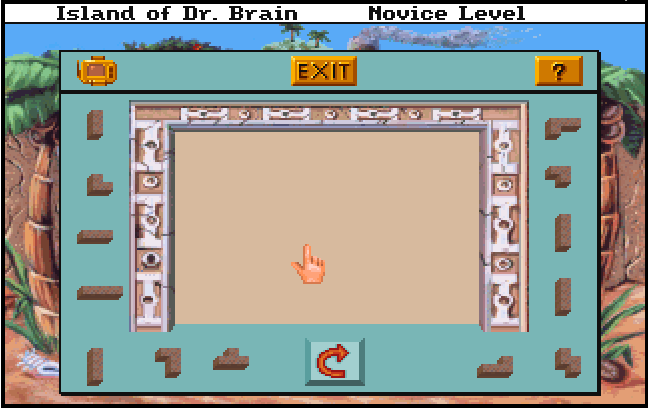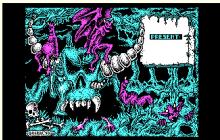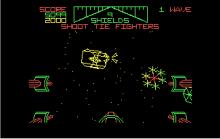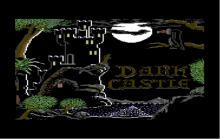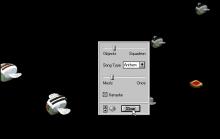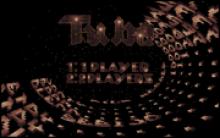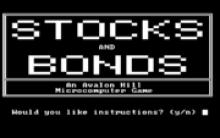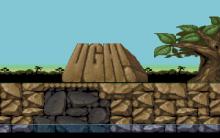The Island of Dr. Brain
Press Keyboard right side: Alt+Enter keys to switch to full screen game play, and Alt+Enter keys to return.
How to play The Island of Dr. Brain
The mouse is used to click on various icons in the icon bar at the top of the screen to perform actions, such as:
- Look (eye icon): Provides a description of objects on the screen.
- Do (hand icon): Allows you to interact with objects.
- Inventory (beach bag icon): Shows the items you have collected.
- Go Back (arrow icon): Returns you to the previous room.
- Help (question mark): Provides information about other icons.
Numerical keypad: In the Elevator Maze puzzle, you use the keypad for movement:
- 8: Move forward
- 2: Move backward
- 4: Turn left
- 6: Turn right
- 9: Ascend
- 3: Descend
Enter key: Can be used in some puzzles, like the latitude and longitude puzzle, as an alternative to clicking the mouse button.
The Island of Dr. Brain Description
In 1992, Sierra On-Line released The Island of Dr. Brain, the second entry in its quirky yet challenging Dr. Brain series. Combining educational puzzles with point-and-click exploration, it was a rare example of a game that could make players laugh, learn, and think hard — sometimes all within a single puzzle. Even today, this retro classic remains a favorite among fans of ’90s edutainment.
If you’ve ever wanted to revisit it, or you’re discovering it for the first time, this guide will walk you through its history, mechanics, puzzle strategies, and ways to play it on modern systems.
- Released in 1992 by Sierra On-Line for MS-DOS
- Second game in the Dr. Brain series, after Castle of Dr. Brain
- Focuses on logic, math, art, and language puzzles, many randomized
- No official remake, but still playable via DOSBox or online archives
- Ideal for fans of educational puzzle adventures
A Quick Overview
The Island of Dr. Brain is set on — you guessed it — a mysterious island owned by the eccentric genius Dr. Brain. As his newly hired lab assistant, you’re sent on a mission to retrieve a stolen battery for his latest invention. The catch? Every step forward is blocked by a puzzle, and the only way to proceed is to solve them.

Unlike Castle of Dr. Brain, where most puzzles stayed the same each time you played, many in The Island of Dr. Brain are randomized. This design choice forces you to rely on genuine problem-solving skills rather than memorizing solutions from a guide. It’s a bold move that keeps the game fresh, even decades later.
Gameplay and Puzzle Variety
The game’s structure is straightforward: explore different parts of the island, interact with objects, and solve themed puzzles to unlock the next area. But the puzzles themselves are anything but simple. One moment you might be arranging a magic square so each row, column, and diagonal adds up to the same number; the next, you could be matching flags to their countries or decoding a cryptogram.
Puzzle categories include logic and math challenges such as grids, equations, and number patterns; language-based games like word scrambles or foreign vocabulary matching; art and music tests involving famous paintings or melody replication; and spatial reasoning tasks such as sliding tiles or rotation puzzles.
Difficulty settings let you scale the challenge up or down. At lower levels, puzzles have fewer steps and more hints; at higher settings, you’re on your own with complex variations.
The Island vs. Castle of Dr. Brain
While both games share a similar DNA, The Island of Dr. Brain feels more playful in tone and broader in scope. Castle was rooted in a single location with fixed challenges; Island moves through beaches, caves, laboratories, and more, each with its own puzzle style. And with randomized elements, replaying Island feels less repetitive.

Here’s how they compare:
|
Feature |
The Island of Dr. Brain |
Castle of Dr. Brain |
|
Release Year |
1992 |
1991 |
|
Setting |
Remote island |
Castle |
|
Puzzle Randomization |
High |
Low |
|
Focus Areas |
Science, art, logic, language |
Logic, math, visual puzzles |
|
Narrative |
Retrieve stolen battery |
Enter Dr. Brain’s employ |
Playing on Modern Systems
Despite its age, the game is still accessible today. DOSBox remains the most reliable way to run the original MS-DOS version on Windows, Mac, or Linux. For those who prefer zero setup, sites like Internet Archive offer browser-based emulation, letting you jump in instantly. ScummVM support is also possible, though setup may require some file conversion.
Similar Games You Might Enjoy
If you like The Island of Dr. Brain, there’s a good chance you’ll also enjoy the Professor Layton series, which offers a modern puzzle-adventure feel. You might also try The Witness for open-world exploration-based puzzles or revisit Myst for an atmospheric challenge. Sierra fans can explore other titles from the ’90s like EcoQuest or Pepper’s Adventures in Time.
Common Mistakes to Avoid
Many new players fall into the trap of over-relying on external guides. While they can be helpful for particularly tricky puzzles, remember that part of the game’s charm lies in figuring things out for yourself. Skipping the in-game instructions is another common mistake, as they often include subtle hints that make the difference between guessing and solving.
The Island of Dr. Brain is the second game in the Dr. Brain series by Sierra Online. It was released in 1992 and was only available to play in DOS. Like the other games in the Dr. Brain series, "The Island of Dr. Brain" was an educational puzzle game.
The game's story starts with an explanation by Dr. Brain. He tells the player that plans for his latest project were stolen, and he charges the player to retrieve a battery from his island and bring it to him. The player must then traverse the security puzzles Dr. Brain has set up throughout his island.
The game was designed by Patrick Bridgemon, and was produced and directed by Brett Miller. Todd Powers was the lead programmer. The game's music was written by Rob Atesalp.
Cheats/Hints/Walkthroughs for The Island of Dr. Brain
Because solutions vary, a traditional step-by-step walkthrough is less useful than understanding each puzzle’s core logic. Here are a few general strategies to help:
- Learn the rules first by reading the in-game instructions carefully; they often contain hidden clues
- Break big problems into smaller parts — for sliding-tile puzzles, solve the edges first
- Look for patterns in word games — single-letter words are usually “A” or “I”
- Keep notes during logic grid puzzles to track your process
For players who prefer visual help, recorded playthroughs on YouTube or GameFAQs’ puzzle-by-location hints are great resources.
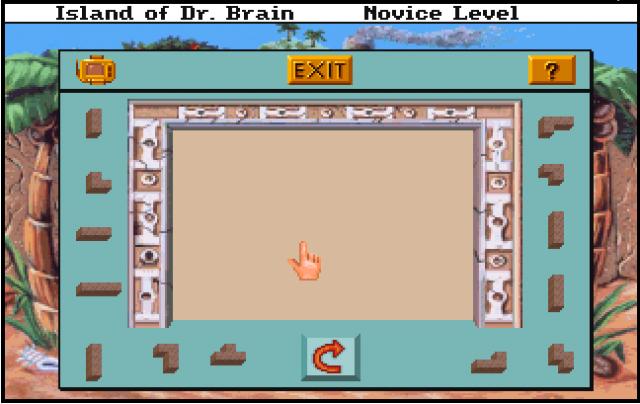
The Island of Dr. Brain - additional information







